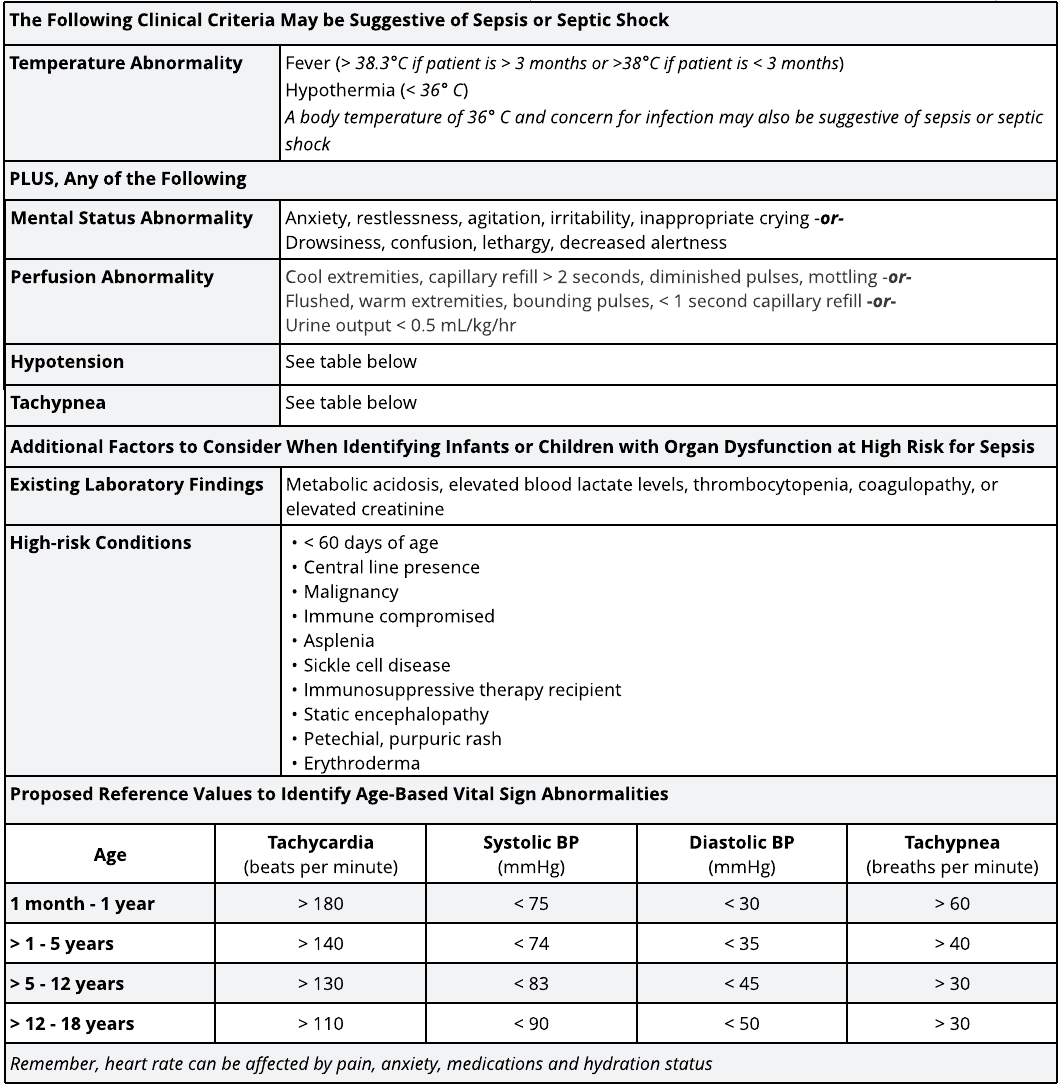Systematic Screening for Sepsis/Septic Shock

References
Bonfide, C.P., Brady, P.W., Keren, R., Conway, P.H., Marsolo, K., & Daymont, C. (2013). Development of heart and respiratory rate percentile curves for hospitalized children. Pediatrics, 131(4), e1150-1157. https://doi.org/10.1542/peds.2012-2443
Children's Hospital of Philadelphia (2023). Signs and symptoms concerning for sepsis and septic shock. https://www.chop.edu/clinical-pathway/sepsis-emergency-department-inpatient-picu-clinical-pathway
Davis, A.L., Carcillo, J.S., Aneja, R.K., Deymann, A.J., Lin, J.C., Nguyen, T.C., Okuysen-Cawley, R.S., Relvas, M.S., Rozenfeld, R.A., Skippen, P.W., Stojadinovic, B.J., Williams, E.A., Yeh, T.S., Balamuth, F., Brierley, J., de Caen, A.R., Cheifetz, I.M., Choong, K., Conway, E., Jr, Cornell, T., ... Zuckerberg, A.L., (2017). American College of Critical Care Medicine Clinical practice parameters for hemodynamic support of pediatric and neonatal septic shock. Critical Care Medicine, 45(6), 1061-1093. https://doi.org/10.1097/CCM.0000000000002425
Gebara, B.M. (2005). Values for systolic blood pressure. Pediatric Critical Care Medicine, 6(4), 500. doi: 10.1097/01.PCC.0000164344.07588.83
Goldstein, B., Giroir, B., & Randolph, A. (2005). International pediatric sepsis consensus conference: Definitions for sepsis and organ dysfunction in pediatrics. Pediatric Critical Care Medicine, 6(1), 2-8. https://doi.org/10.1097/01.PCC.0000149131.72248.E6
These pathways do not establish a standard of care to be followed in every case. It is recognized that each case is different, and those individuals involved in providing health care are expected to use their judgment in determining what is in the best interests of the patient based on the circumstances existing at the time. It is impossible to anticipate all possible situations that may exist and to prepare a pathway for each. Accordingly, these pathways should guide care with the understanding that departures from them may be required at times.
